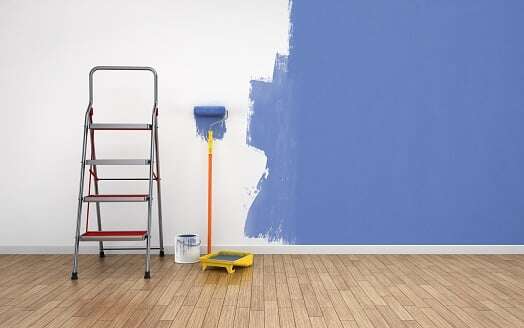 Of all the home services provided by Experts In Your Home, perhaps none inspires as much curiosity, as much intense observation and as many questions as painting.
Of all the home services provided by Experts In Your Home, perhaps none inspires as much curiosity, as much intense observation and as many questions as painting.
And why not? Painting looks fun – reminding us of the times we held a paint brush in our hands as children and let loose with pools of color. So why not let loose where we could enjoy the results of our artistic efforts the most: in our own home?
While fun, home painting also requires planning, concentration and attention to detail. And that's before you even address myriad painting techniques, which can (and do) fill books.
When Experts In Your Home is asked for home painting advice, they pass along these 10 tips most often:
- Consider color. Lighter colors can make a room look larger, and bolder colors can energize a lackluster room that needs a boost. If you're nervous about making too big of a change at once, consider confining a bold color to one wall and choosing a lighter, complementary color for the others. The sheer number of color choices can be dizzying, but Experts In Your Home can help you steady the color wheel.
- Sample and assess first, paint later. Color can look different in the presence of sunlight and shadows, which is why it's smart to buy a small bottle (or bottles) of paint before you buy what you need for your home painting project. Spread it on the wall or a white poster board and take a few days to observe it under changing light conditions.
- Review various paint finishes. Match the finish to the room you're painting and its function, not just how the sheen looks. Satin and gloss finishes hold up well in high-traffic areas and on trim. These finishes clean up easily, too. Flat finishes can reconcile shiny finishes in other parts of a room, but they can get dirty easily and do not clean up as well.
- Prep work is vital. Prepping is time-consuming – more so than painting – but cutting corners on washing walls, removing switch plates, patching, sanding and taping always shows up in serious imperfections in the end.
- Don't skip primer. Think of primer as peanut butter between two slices of bread; it covers any imperfections underneath and ensures that the top coat of paint “sticks.”
- Invest in quality tools. You'll need plenty: nylon bristle brushes for water-based paint, natural-bristled brushes for oil-based paint and foam brushes for intricate work. Rollers save time while an extension pole might save your back.
- Combine paint gallons for uniformity. Pouring all your paint into one large, sealable bucket isn't just a convenience measure; it allows you to stir the entire batch together to ensure uniformity of color – just in case a disparity occurred while the individual gallons of paint were being mixed at the store.
- Ignore the clock. Don't think of yourself as slow (especially with prep work); think of yourself as careful. You'll be happier with the finished product in the end. Don't bring furniture and other items back into a freshly painted room for at least 24 hours, and give your walls between two weeks and 30 days to fully cure. Avoid touching or washing the walls in the meantime.
- Store excess paint. Don't dispose of it. You'll probably need it for touch-ups at some point. For added ease, store some leftover paint in a small jar that you can easily tote around and label it accordingly.
- Remember that paint can be changed – and rather inexpensively. Even if you rushed the “sample and assess” stage, a “do over” will take less time. Sometimes it pays to take a step back, especially if you think the color you chose is too overpowering on all four walls.
If you are stuck in a home painting job or simply want to hire out the whole process, the Experts In Your Home painting team eagerly awaits your questions-- just as soon as you're ready to pop open the possibilities for your home.
For help with home painting, contact our Chico area home painting experts today for a free quote.








